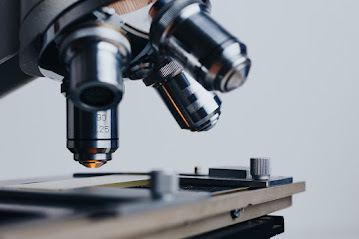Medical Marvels: How Biomedical Engineering is Revolutionizing Healthcare
The century of health and medicine is currently upon us. Integrating the biological sciences and engineering to address significant difficulties in medicine and healthcare is now possible, thanks to ground-breaking advances in mechanics, optics, materials, electronics, and computing during the past few decades. People with specific healthcare issues can now access solutions that were previously unattainable, improving the quality, safety, and productivity of billions of lives. This is made possible only by biomedical engineering.
Innovative biomedical engineering advances that transformed healthcare
Camera Pill - For the early-stage detection of esophageal and other digestive tract malignancies, it is utilised as an alternative to the endoscope. The swallowable pill captures high-resolution, full-color photos as it moves through the digestive system, negating the need for anaesthesia and sedative.
Electronic Aspirin - It is a patient-controlled device that interrupts headache signals. On the side of the head that is causing the headache, a small device that stimulates the nerves is surgically implanted in the upper gum. The signals generated by the device work to block the pain-causing neurotransmitters.
Robotic Surgery - A camera arm and mechanical arms with surgical instruments attached are part of the most popular clinical robotic surgical system. While seated at a computer console next to the operating table, the surgeon manages the arms. A high-definition, enlarged, 3D view of the surgical site is provided to the surgeon through the console. Other team members who assist with the procedure are under the surgeon's direction.
Artificial Pancreas - An artificial pancreas is a three-part device that functions to replicate how a normal pancreas regulates blood glucose levels in the body. A tiny sensor that is implanted under the skin serves as the basis of a continuous glucose monitor (CGM), which measures blood glucose levels every few minutes. The sensor wirelessly transmits the data to a smartphone app or an insulin infusion pump program. The computer program determines how much insulin is required and alerts the insulin infusion pump when it is time to start giving insulin.
3-D Printing - The use of 3-D printing enables the creation of prosthesis, implants, and airway stents that are unique to the patient. These specialised products reduce the risk of postoperative problems while improving comfort and performance because they are made to the patient's body measurements. Surgical planning using 3-D printing is also possible for procedures like heart surgery or even face transplants.
Bluetooth Pulse Oximeter - A pulse oximeter's Bluetooth functionality has various benefits. Since there are no wires or cords connecting the gadget to the monitoring equipment, it first enables enhanced mobility and convenience. Users are still able to keep an eye on their oxygen levels while moving about freely. It also makes it simpler to save and share information with healthcare providers or carers because it allows for smooth data transfer.
Future of biomedical engineering
The potential for biomedical engineering to influence medical advancement is boundless as the discipline develops. The creation of regenerative medicine is one area where biomedical engineering is making significant advancements. Regenerative medicine includes repairing damaged or ill organs and tissues using the body's own cells and tissues. With the potential to rebuild damaged tissues and restore organ function, biomedical engineers are creating technologies including tissue engineering, gene therapy, and stem cell therapies. Personalised medicine development is another area where biomedical engineering is making major strides. Treatment plans in personalised medicine are made specifically for a patient's individual genetic profile and medical background. Technologies for personalised diagnosis and treatment are being created by biomedical engineers, such as DNA sequencing, genomic medicine, and precision medicine.
 |


Comments
Post a Comment